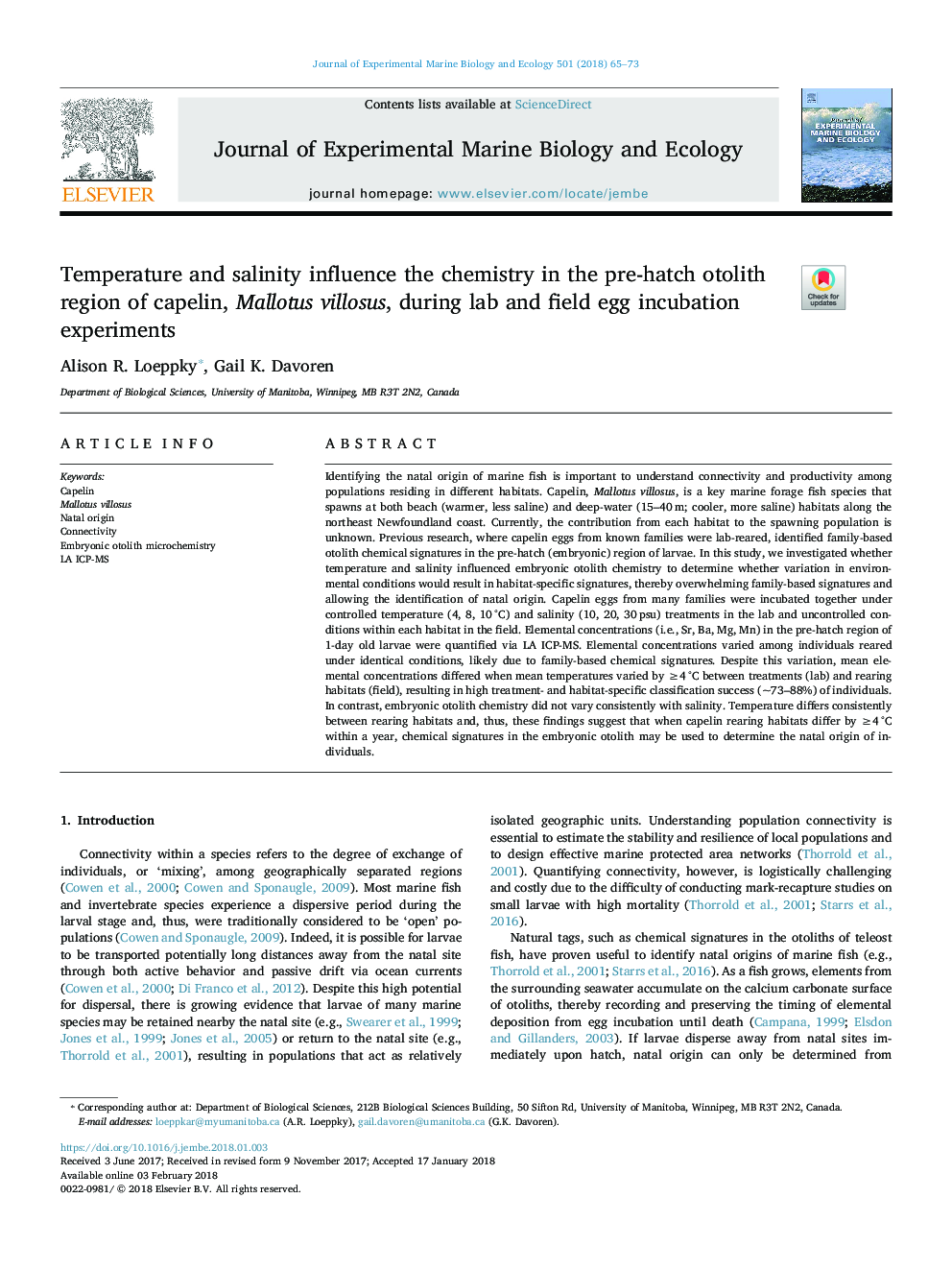| کد مقاله | کد نشریه | سال انتشار | مقاله انگلیسی | نسخه تمام متن |
|---|---|---|---|---|
| 8848982 | 1618374 | 2018 | 9 صفحه PDF | دانلود رایگان |
عنوان انگلیسی مقاله ISI
Temperature and salinity influence the chemistry in the pre-hatch otolith region of capelin, Mallotus villosus, during lab and field egg incubation experiments
دانلود مقاله + سفارش ترجمه
دانلود مقاله ISI انگلیسی
رایگان برای ایرانیان
موضوعات مرتبط
علوم زیستی و بیوفناوری
علوم کشاورزی و بیولوژیک
علوم آبزیان
پیش نمایش صفحه اول مقاله

چکیده انگلیسی
Identifying the natal origin of marine fish is important to understand connectivity and productivity among populations residing in different habitats. Capelin, Mallotus villosus, is a key marine forage fish species that spawns at both beach (warmer, less saline) and deep-water (15-40â¯m; cooler, more saline) habitats along the northeast Newfoundland coast. Currently, the contribution from each habitat to the spawning population is unknown. Previous research, where capelin eggs from known families were lab-reared, identified family-based otolith chemical signatures in the pre-hatch (embryonic) region of larvae. In this study, we investigated whether temperature and salinity influenced embryonic otolith chemistry to determine whether variation in environmental conditions would result in habitat-specific signatures, thereby overwhelming family-based signatures and allowing the identification of natal origin. Capelin eggs from many families were incubated together under controlled temperature (4, 8, 10â¯Â°C) and salinity (10, 20, 30â¯psu) treatments in the lab and uncontrolled conditions within each habitat in the field. Elemental concentrations (i.e., Sr, Ba, Mg, Mn) in the pre-hatch region of 1-day old larvae were quantified via LA ICP-MS. Elemental concentrations varied among individuals reared under identical conditions, likely due to family-based chemical signatures. Despite this variation, mean elemental concentrations differed when mean temperatures varied by â¥4â¯Â°C between treatments (lab) and rearing habitats (field), resulting in high treatment- and habitat-specific classification success (~73-88%) of individuals. In contrast, embryonic otolith chemistry did not vary consistently with salinity. Temperature differs consistently between rearing habitats and, thus, these findings suggest that when capelin rearing habitats differ by â¥4â¯Â°C within a year, chemical signatures in the embryonic otolith may be used to determine the natal origin of individuals.
ناشر
Database: Elsevier - ScienceDirect (ساینس دایرکت)
Journal: Journal of Experimental Marine Biology and Ecology - Volume 501, April 2018, Pages 65-73
Journal: Journal of Experimental Marine Biology and Ecology - Volume 501, April 2018, Pages 65-73
نویسندگان
Alison R. Loeppky, Gail K. Davoren,